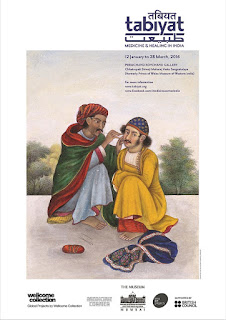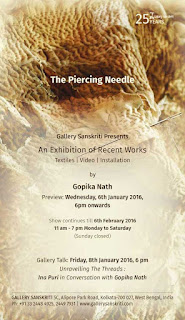Iconic portrait of renowned singer MS Subbulakshmi painted by MF Husain to be displayed at ‘Art Bengaluru’ by Navrathan’s Art Gallery
MF Husain’s iconic portrait of MS Subbulakshmi, the world renowned singer and foremost proponent of Carnatic music, will be displayed by India’s newest art gallery, Navrathan’s of Bangalore. Navrathan jewellers have been a familiar destination for Bangaloreans since 1954. The sign of the iconic `nine jewels’ – the nine auspicious planetary gems – has lit up 18 MG road and attracted a stream of clients eager to acquire their signature gold jewellery. The man behind the legendary success of Navrathan jewellers is Mr. Gautam Chand Bafna, a connoisseur of arts, who has now extended his patronage to include fine and decorative arts; modern and contemporary Indian paintings, European paintings, antiques as well as interior décor, period-style furniture, porcelain, glass, silver and sculpture.
Portrait of a Legend
 |
| Navrathan’s Art Gallery presents portrait of MS Subbulakshmi painted by MF Husain at ‘Art Bengaluru 2016’ |
The Queen of Music
Subbulakshmi’s music in films made her nationally famous. However, her devotional songs created even greater fame in India and internationally. Her voice interpreted the compositions of the three greats of Carnatic music, Thyagaraja, Muthuswamy Dikshiter and Shyam Sastri. Mahatma Gandhi was moved to tears when she sang his favourite bhajan Vaishnava Jana To Tene Kahiye Je Peer Parayee Jaane Re. When she sang at the United Nations Assembly, the New York Times wrote that Westerners could understand her message though it was delivered in a different language. She sang before Queen Elizabeth at London’s Royal Albert Hall. In 1954 Subbulakshmi received the Padma Bhushan and in 1969 received the title of Sangeetha Kalanidhi. She was the first woman to be honoured by the Madras Music Academy. In 1974 she received the Magsaysay Award and in 1975 she received the Padma Vibhushan. In 1990 she was awarded the Indira Gandhi Award for national integration. In 1998 she became the first musician to be honoured with the Bharat Ratna.
The United Nations has issued a stamp to mark Subbulakshmi’s birth centenary, coinciding with the celebration of India’s 70th Independence Day on 15th August 2016.
Navrathan’s is honoured and privileged to display this superb portrait of one of India’s greatest singers by one of India’s greatest artists.
Contact Michael Ludgrove, Navrathan’s Art Consultant on +91 99725 97430 and Chirag Chopra on +91 99006 85028 for all enquiries
Navrathan’s Art Gallery
Navrathan’s has taken up 35,000 square feet over three floors at 39 MG Road, perhaps the largest such
 | |||
|
The second floor of this paradise for the discerning interior décor enthusiasts, houses Mr. Gautam’s latest venture, an art gallery. A state-of-the-art picture hanging system has been installed in a 3,000 sq. ft. picture gallery dedicated to exhibitions of paintings, photography and other interesting genres. A series of exhibitions is planned and will commence in September, and will include Masters as well as newly discovered talents; Photography and other categories such as rare books, maps, jewellery design and watches will also be featured.
Related posts,
- TIPS: 10 Tips For Buying Art
- Art Investment: The Fine Art of Collecting
- ART COLLECTION: Chitrakala Parishath, Bangalore
- ART COLLECTION: Jaganmohan Palace, Mysore
- ART COLLECTION: NGMA, Bangalore
























